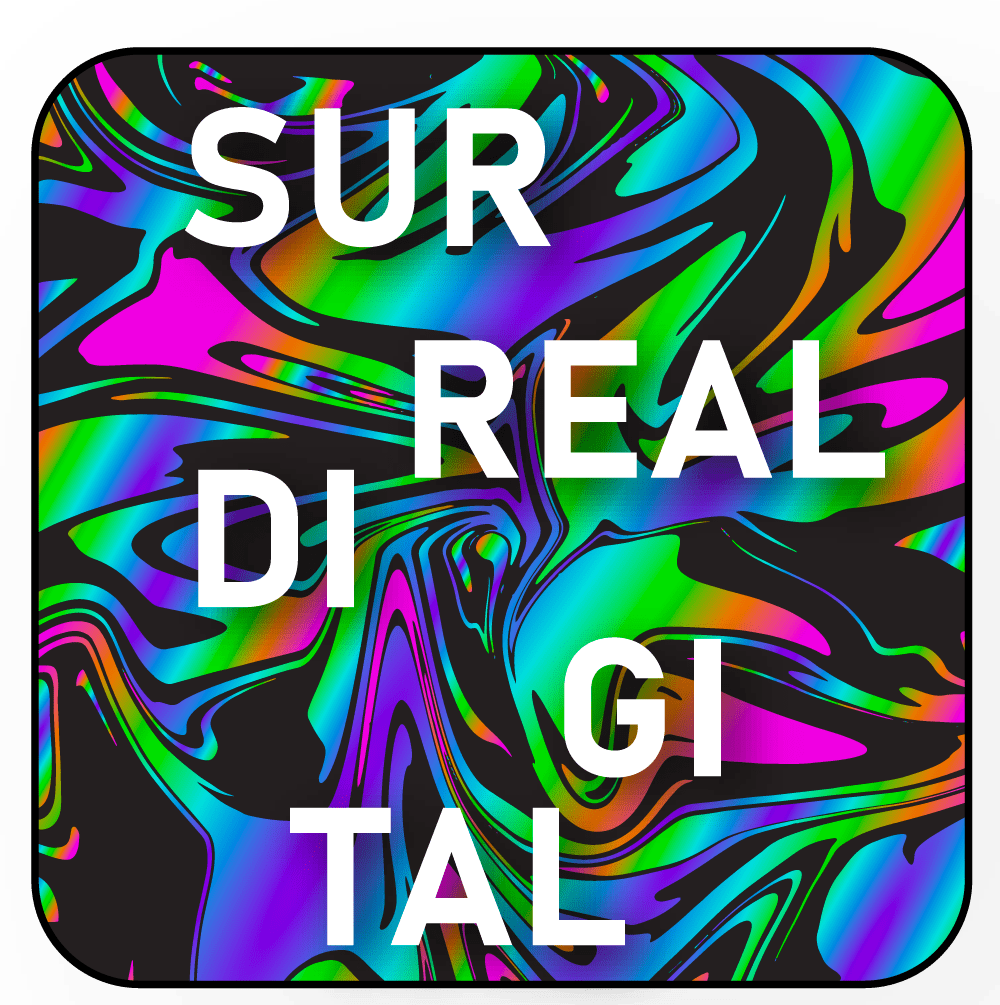10 Insights into the Art NFT Market
From The Art Basel & UBS Report 2022
1) There’s a huge gap between the supply and the demand in the Art NFTs market.
“Just 6% of dealers ” and “only 5% of the second-tier auction houses” surveyed in the Art Basel 2022 Report had sold NFTs in 2021.
Yet “74% of HNW collectors had purchased art-based NFTs in 2021. 88% of HNW collectors said they were interested in purchasing NFT-based artworks in future, and just 4% were not at all interested.”
Yet “74% of HNW collectors had purchased art-based NFTs in 2021. 88% of HNW collectors said they were interested in purchasing NFT-based artworks in future, and just 4% were not at all interested.”
2) Despite the rise of NFT platforms, HNW collectors still rely on art dealers and auction houses in discerning the value of NFTs and purchasing NFTs.
2) Despite the rise of NFT platforms, HNW collectors still rely on art dealers and auction houses in discerning the value of NFTs and purchasing NFTs.
In the sample of HNW collectors interviewed in the UBS & Art Basel Report, “most had still stuck to sourcing NFTs from galleries and auction houses and just 8% used an NFT platform.”
It seems that art curators, art galleries, museums, and auction houses are still likely to be the “gatekeeper” of the value of NFT art, but to a lesser degree as opposed to the traditional art world.
It seems that art curators, art galleries, museums, and auction houses are still likely to be the “gatekeeper” of the value of NFT art, but to a lesser degree as opposed to the traditional art world.
3) The Art NFTs market is still in its infancy, but with tons of untapped opportunities.
3) The Art NFTs market is still in its infancy, but with tons of untapped opportunities.

Art NFTs only make up 14% of the total NFT market, yet “the value of sales for art-related NFTs expanded over a hundredfold year-on-year reaching $2.6 billion.” (Art Basel Report, 2022) Fine Art NFTs market is still in its infancy and has hugely untapped opportunities.
Yet a ton of art dealers are hesitant to enter the NFT Art Market - “ just under half (46%) of art dealers reported that they had no interest in going into the NFT art market. The remaining 29% were unsure whether they would sell NFTs in future or not.” (Art Basel Report, 2022)
In the midst of uncertainty lies opportunities.
4) Art businesses that have leveraged the trend have generated traction.
4) Art businesses that have leveraged the trend have generated traction.
“Christie’s NFT sales totalled $150 million, including the landmark sale of Beeple’s Everydays: The First 5000 Days (2021) for $69.3 million in March. Sotheby’s NFT sales reached $80 million.” TR lab sold Chinese artist Cai Guo-Qiang’s first ever NFT launch for $2.5m. And Damien Hirst has earned more than $25m from his first NFT publications.
5) Currently, the Art NFTs World attracts art flippers.
5) Currently, the Art NFTs World attracts art flippers.
“The average time between purchase and resale in art NFTs is at 33 days.” Whereas in the traditional art world, the average resale period on the art market is between 25 to 30 years.
“The pseudonymous nature of transactions has also meant there are few barriers to entry for purchasing or sales unlike the traditional art market.”
Creating an NFT Art Advisory specifically for NFT art investment, similar to what Maddox and Masterworks offer for the traditional art world, would be highly attractive to the speculative buyers whose main incentives are financial returns.
“The pseudonymous nature of transactions has also meant there are few barriers to entry for purchasing or sales unlike the traditional art market.”
Creating an NFT Art Advisory specifically for NFT art investment, similar to what Maddox and Masterworks offer for the traditional art world, would be highly attractive to the speculative buyers whose main incentives are financial returns.
6) The traditional HNW Art Collectors are also buying NFTs. Art NFTs appeal to all generations.
6) The traditional HNW Art Collectors are also buying NFTs. Art NFTs appeal to all generations.

“74% of HNW collectors had purchased art-based NFTs in 2021, and 88% of HNW collectors said they were interested in purchasing NFT-based artworks in future, and just 4% were not at all interested.”
“The median expenditure of HNW collectors across all NFTs was $24,000, with 37% of that (or $9,000) on art.” (Art Basel Report 2022)
HNW Millennials and Gen Z spend more than HNW Gen X and Boomers on buying NFTs. But regarding art-related NFTs, Gen X and Boomers are spending approximately the same amount as Millennials and Gen Zs.
One of TR Lab’s founders & Christie’s Chairman of Asia, Li Xin-Cohen, also mentioned during the Art Business London Conference 2022 that some traditional art collectors from Gen X and Boomers generation become interested in NFTs after their artists, whose physical paintings are in their collection, start launching NFTs. Thus, artists are influencing traditional art collectors’s NFT purchase decisions.
“The median expenditure of HNW collectors across all NFTs was $24,000, with 37% of that (or $9,000) on art.” (Art Basel Report 2022)
HNW Millennials and Gen Z spend more than HNW Gen X and Boomers on buying NFTs. But regarding art-related NFTs, Gen X and Boomers are spending approximately the same amount as Millennials and Gen Zs.
One of TR Lab’s founders & Christie’s Chairman of Asia, Li Xin-Cohen, also mentioned during the Art Business London Conference 2022 that some traditional art collectors from Gen X and Boomers generation become interested in NFTs after their artists, whose physical paintings are in their collection, start launching NFTs. Thus, artists are influencing traditional art collectors’s NFT purchase decisions.
7) HNW Millennials and Gen Z are more open to purchasing digital art than Gen X and Boomers.
7) HNW Millennials and Gen Z are more open to purchasing digital art than Gen X and Boomers.
“Over half of the HNW collectors surveyed (56%) were planning to buy digital art in 2022, and this was highest for millennial collectors (61%), and in Taiwan (71%), Singapore (62%), and the UK (61%).” (Art Basel Report 2022)

While digital art and how to buy digital art and NFTs are no-brainers for millennials and Gen Z, Gen X and Boomers need more information before they would commit to buying digital art - it’s very likely that they would need education on why digital art is important, guidance on what to buy, when to buy, and the process behind buying both cryptos and NFTs.
8) HNW collectors are buying a high number of NFTs, but at lower price point compared to traditional artworks.
8) HNW collectors are buying a high number of NFTs, but at lower price point compared to traditional artworks.
“Average prices for art-related NFTs were $200 for primary sales and $265 for secondary resales in 2020. In 2021, these rose to $1,462 and $5,485 respectively.”(Art Basel Report 2022)
The low price of NFTs tends to be because of the scarcity technique used by most NFT projects -they release a limited amount of NFT drops at lower price points upon project release, and price increases after the rapid trading on the secondary market.
“For those who had purchased NFTs, the median number summed over all categories was 13, including 4 related to art.”(Art Basel Report 2022)
HNW collectors are also likely to “shop around” different NFT projects to allow for risk diversifications.Book design is the art of incorporating the content, style, format, design, and sequence of the various components of a book into a coherent whole. In the words of Jan Tschichold, "methods and rules upon which it is impossible to improve, have been developed over centuries. To produce perfect books, these rules have to be brought back to life and applied."
Front matter, or preliminaries, is the first section of a book and is usually the smallest section in terms of the number of pages. Each page is counted, but no folio or page number is expressed or printed, on either display pages or blank pages.
The low price of NFTs tends to be because of the scarcity technique used by most NFT projects -they release a limited amount of NFT drops at lower price points upon project release, and price increases after the rapid trading on the secondary market.
“For those who had purchased NFTs, the median number summed over all categories was 13, including 4 related to art.”(Art Basel Report 2022)
HNW collectors are also likely to “shop around” different NFT projects to allow for risk diversifications.Book design is the art of incorporating the content, style, format, design, and sequence of the various components of a book into a coherent whole. In the words of Jan Tschichold, "methods and rules upon which it is impossible to improve, have been developed over centuries. To produce perfect books, these rules have to be brought back to life and applied."
Front matter, or preliminaries, is the first section of a book and is usually the smallest section in terms of the number of pages. Each page is counted, but no folio or page number is expressed or printed, on either display pages or blank pages.
9) Pseudonymous nature of transactions, no KYC Check before sales, and the transparency of price will lower the barrier to entry to purchase high-value NFTs, unlike in the traditional art world where dealers choose who to sell to.
“Sellers are not required to pass any ‘know your customer’ or other audits before they are allowed to make a sale as they would be on traditional internet platforms.” Sellers also cannot know who the customer is due to the pseudonymous nature of transactions. Art dealers can no longer control to whom they want to sell their art to.
Practices such as the following are not uncommon:
Wash trading - “artificially increasing the value of an NFT by being on both sides of the transaction and money laundering are not uncommon. ‘
Rug-pulls - "when initial NFT collections sell out for huge gains on the basis that buyers will receive free NFTs or other perks in subsequent drops, but then the individuals behind the collections ‘cut and run’ leaving the original NFT purchasers with worthless NFTs.”
Copyright infringements - There has been “the fraudulent replication and theft of artists’ images and intellectual property.” Infringement alerts have grown dramatically: from September to October, alerts grew by 30%, and by November to December the monthly growth rate was over 300%.”
Wash trading - “artificially increasing the value of an NFT by being on both sides of the transaction and money laundering are not uncommon. ‘
Rug-pulls - "when initial NFT collections sell out for huge gains on the basis that buyers will receive free NFTs or other perks in subsequent drops, but then the individuals behind the collections ‘cut and run’ leaving the original NFT purchasers with worthless NFTs.”
Copyright infringements - There has been “the fraudulent replication and theft of artists’ images and intellectual property.” Infringement alerts have grown dramatically: from September to October, alerts grew by 30%, and by November to December the monthly growth rate was over 300%.”
Interested in growth hacking your art business?

